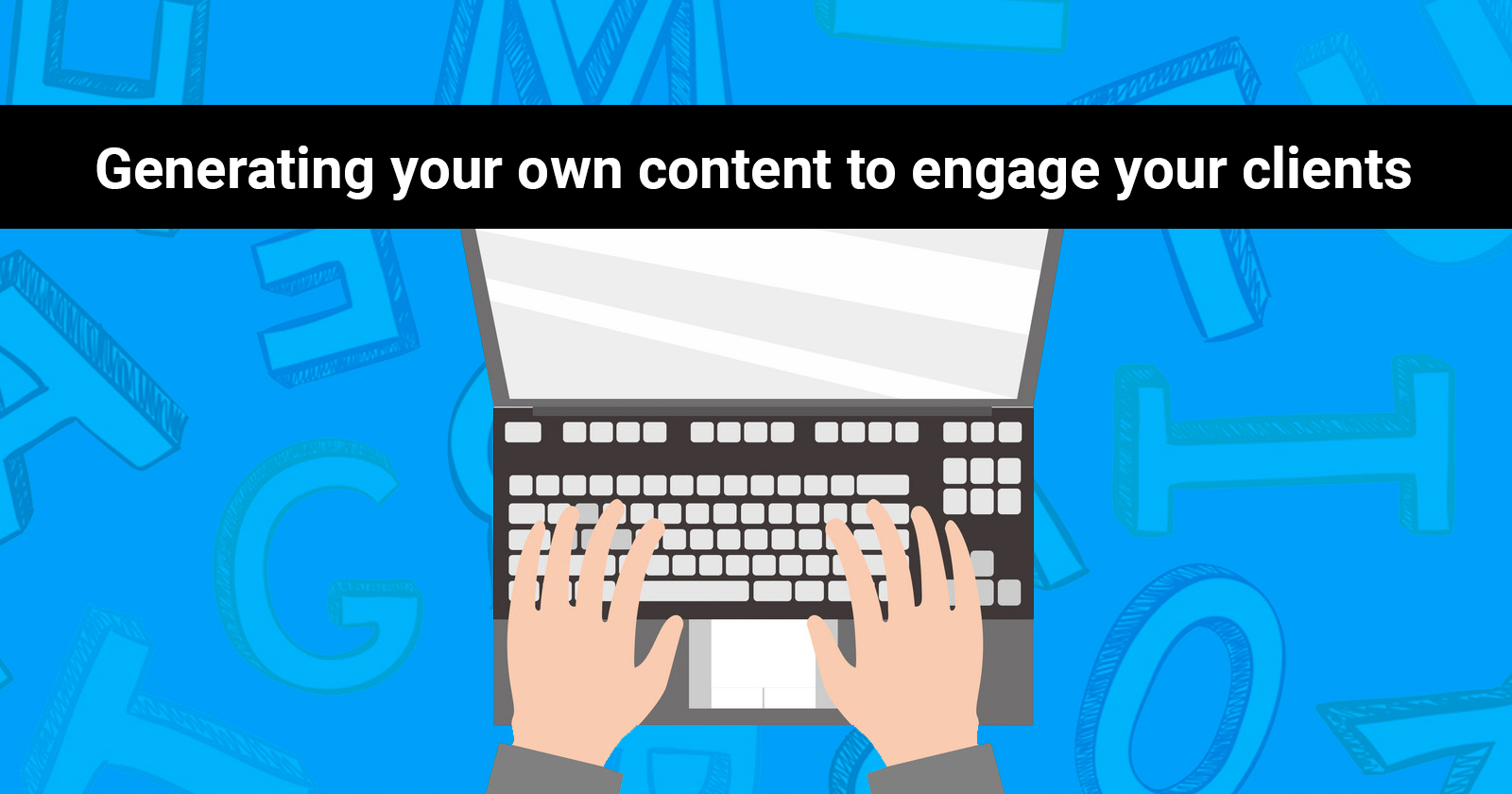
Okay. Before we scare you off… generating your own content does not necessarily entail a full blown blog site with an army of writers churning content daily.
When we say ‘content’ it could really be just a note that could provide value to the reader.
Keyword: provide value
The channels you can use are actually those that are already at your disposal.
As long as this channel allows you to write (to a reasonable amount of character / words), a url is generated when posted and can easily be shared… you are good to go!
This can be in the form of your own facebook or linkedin post (like literally the post itself) or even a google drive collection of word doc or pdf of your articles!
There are a multitude of reasons why companies invest in huge content teams.
While many of this is related to SEO, promotional content on social channels or driving traffic to a lead generation page…
In this article, the value we want to share is in giving you a reason to engage your clients (and potentially, their network, if they share your content).
We believe every intermediary has their own value in terms of their knowledge and experience, and want to provide some ideas on how you can quickly get down to it (and not have to be some pro content marketer before you can do so!) – anyone can be a valuable content creator!
Essentially, generating your own content
- Allows you to showcase your knowledge, insight and experience and position yourself as an expert
- Gives you a reason to continuously engage your clients in a non-intrusive, yet valuable way
- Provide you the opportunity to ‘put yourself out there’ in terms of exposure to your clients and potentially their network
So… here are some tips on content creation and the value you can derive out of them!
Channels you can consider
We alluded to this a little above.
As mentioned, this channel does not have to be a full-blown blog.
However, the channel you choose needs to make sense as well.
The simplest (and one you are likely to be familiar with) would be your own Social accounts (e.g. Facebook, LinkedIn, Instagram, Tik Tok etc.).
It does not even have to be a facebook page… just… your own Facebook account!
The pros of using these channels would be
- It immediately already has an audience – your friends, family, existing clients or peers
- It has inbuilt sharing functionalities that can extend beyond that platform e.g. whatsapp
- It is an interface you are likely very familiar with
You may also consider going into relevant forums to do so.
While all of us may have some preconceived notions of what an article looks like, essentially, in its most basic form, an article is really words that make a point (and of course, a valuable one).
The pros of using this platform would be
- You are already speaking to people about a topic that is relevant
- You are exposing yourself to potential business
- Some forums already have strong inbuilt SEO that might pick up on keywords of your post
A more ‘left-field’ suggestion we have is to use google docs.
Google doc is essentially like a word document that is hosted online. What this means is that it is highly / easily accessible – basically, a url is generated when you create a google doc.
The pros of using this platform would be
- You can write as much as you want
- You can quickly share it to your mailing list (i.e. a collection of email addresses)
- You can limit who does what in the document (e.g. who can comment on it, who can only view it)
Articles and picking the right style
There are various article ‘types’ that you can choose to style yours after…
The “How-To” Post
This is something we feel might be relevant for an insurance intermediary to start writing on. You can draw on your knowledge and experience to share tips relevant to insurance purchasing. Examples of such could be ‘How to know if you are sufficiently insured’ or ‘How to start considering the policies required for starting a restaurant business’. Essentially, this type of article allows you to answer some potential questions before they are being asked.
The listicle
As the name suggests, this article is a collection of key points for quick reading. The listicle could be anything from ‘7 things you wish you knew before purchasing a policy’ to ‘15 considerations to make before purchasing a policy’. Similar to the ‘how-to’ post, such articles allow you to provide short, sharp advice and the opportunity for the reader to reach out to you to know more.
Thought-leadership post
Thought leadership posts allow you to share your expertise on a particular subject matter and share firsthand experience with your readers. These articles can be written in the first person, and is similar to a sharing of a story – as a warning, advise or case study. This could be a story about how you had helped a client previously, a personal experience where insurance was important or even your views of the industry. Writing such articles, as the name suggests, positions you as a thought-leader; someone to go to for expert advice.
Newsjacking
Though the name brings with it some level of negative connotations, it really is not anything bad. Basically, as someone who is well involved or connected to the industry (more so than your client), you might be on the ball when it comes to news or announcements. What you do in a newsjacking post is basically writing about someone else’s news. An example of such could be an announcement by an Insurer of a new product and your view on it.
While there are many other ‘types’ of articles out there, we feel the above four sits will in the domain of intermediaries. In fact, many of the intermediaries are already doing so – just verbally instead of in writing!
Do not be afraid to go out there and tell your story in a more scalable way!
Continuous engagement
Remember, the value of writing and sharing your thoughts is a long-tail one.
Your article might not be immediately relevant to the recipient today but actively and continuously engaging them with different topics gives you that chance to one day hit them when they need it the most.
Either that or, the recipients of your articles know, in the back of their mind, your existence and also value / expertise. When the time comes when they need your service or have a friend who is asking them for recommendations, that you will come top-of-mind.
Regardless, the key point is to keep at it.
Of course, when we say keep going, we do not mean for you to do it blindly.
Set a pace.
Have a base of readers you can send your content to.
This does not have to be too complicated – start off with existing clients of whom you already have contact with.
Create a Whatsapp blast list consisting of these clients and use this as the channel to share links to your article (be it the facebook post or google doc or any other channel you had used to first create the article).
Pace your articles so people in your blast list would kind of have a view of when to expect an article from you. This could be weekly, fortnightly or monthly… the point being, do pace yourself.
It is easy to have tons and tons of content ideas and you might be eager to share them at the earliest, but you will also realise that sooner or later, you will hit some level of ‘writer’s block’. So pace your articles and save for rainy days like that!
Structuring your content calendar
To help you with continuous engagement and to pace yourself, it will be a lot easier if you plan a couple of weeks ahead on what you intend to write about and why.
It could be to coincide with a particular festival for e.g. Father’s Day will be very relevant to talk about retirement policies.
Maintaining a content calendar helps you structure your article ideas and gives you an overview of when it can be most impactful or relevant to share them.
—
The intention of this article is not suggesting that insurance intermediaries become bloggers or content generators overnight.
As such, what we have shared are really tips for almost anyone with knowledge and expertise to get going almost immediately.
So if you are a pro blogger or marketer, stop sniggering.
Little things like this can really elevate your standing amongst clients and wow them!
Are you an Insurance intermediary? Sign up for free now!
It is fuss-free. No credit card or payment required.
